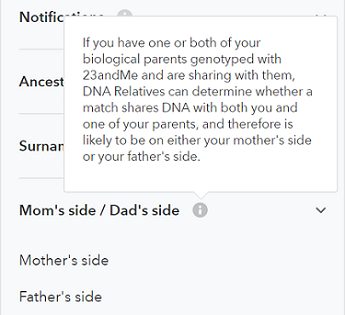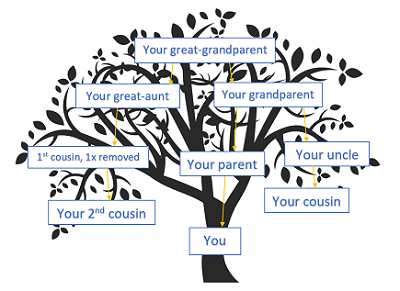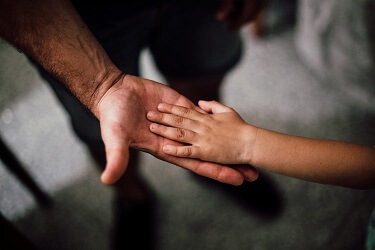
Can I use an ancestry DNA test to find my father?
Every week, there are stories of people finding lost family members, or discovering that their biological parents are not who they thought they were – or even that their biological father is a rogue fertility doctor.
With all these stories of hope and heartbreak, you may be wondering how you can use an ancestry DNA test to find a lost parent or other family member. Odds are that whichever test you choose to take, you will probably have some relatives in the database, even if the closest are only third or fourth cousins. It may be that you have to take multiple ancestry tests in order to find family more closely related to you, or upload your DNA data file elsewhere.
This guide will help you figure out which ancestry test is best for you, and how you can trace an unknown father or missing family member, even if they aren’t in the database you choose.
First things first: which ancestry test should I take?
When it comes to picking an ancestry DNA test to find relatives, what you really want to think about are numbers. Each ancestry testing company has their own database of users, and these databases do not overlap. For instance, if someone has taken a DNA test with AncestryDNA, then they will not show up in the 23andMe family finder feature unless they have also taken this test.

Current database sizes for the major ancestry companies are:
- AncestryDNA: 10 million+
- 23andMe: 5 million+
- MyHeritage: 1.5 million+
- Family Tree DNA: ~1 million
Given the sizes of the databases, you are most likely to find a missing family member – or a clue to your missing family member – in the AncestryDNA or 23andMe databases, since these are the largest. If you can’t decide between these two, we have published an article comparing 23andMe and AncestryDNA.
I already took an ancestry test with one company, but couldn’t find any relatives
Buying multiple ancestry DNA tests can get pricey. If you don’t have any luck finding your relatives in one ancestry database, then before you buy another test it might be a good idea to upload your raw DNA data file (which you can download from most providers) to GEDmatch, a free online database that allows genetic relatives to connect with each other.
If you can’t find any relatives that are close enough to help you on GEDmatch, then it might be worth purchasing another ancestry DNA test.
Also, bear in mind that more and more people are purchasing ancestry DNA tests all the time. If you don’t find any relatives immediately, it is worth allowing yourself to be visible in the family finder database, and switch on notifications so that you will be emailed with any new matches or messages. It might be a long waiting game, so don’t give up hope!
Can I find my father through my other relatives?
Even if you don’t manage to find your missing father, sister, or other relative in the ancestry database(s) you look in, you will often find you have a number of cousin matches. If you connect with a first cousin or an aunt, then you may be led quite easily to your lost parent.
Many people, however, will only have distant relatives in the database: second, third, fourth, fifth, and even sixth cousins. Though these are only distant relations, it is still possible for you to track down a missing father using cousin matches, especially if they are willing to help you.
Filtering by mother’s or father’s side on 23andMe
First, if it is your father you are looking for, you will want to work out which of your DNA matches are on your father’s side. This is easiest if your mother has also taken an ancestry test with the same company as you. For instance, with 23andMe’s DNA Relatives feature, if you have connected with your mother (or another relative related to your mother and not your father) you can filter your DNA matches to show only relatives on your father’s side of the family.
If your mother or maternal relative is not able or willing to take an ancestry test, then you will need to work out how your cousin matches are related to you through your shared matches. Asking your cousin matches what they know about their parents and grandparents will also allow you to rule out more distant relatives on your mother’s side, and to find a common ancestor on your father’s side.
If you are on Ancestry.com, then you will be able to view the family trees of your relatives, assuming they’re willing to share them. In order to use Ancestry’s genealogical features, you will need to either pay for a subscription, or take advantage of a free trial.

If you can find a relative on any site who has a link to their family tree, this will help to show how you are related to them, and might provide clues about your other relations.
Once you find a shared ancestor – a great-grandparent, for example – with one of your genetic matches, you can start to establish a family tree, working out who the descendants are of that ancestor and how they relate to you. You may have to contact your cousin matches to ask questions, and should try to do this as sensitively as possible, bearing in mind that they might not know how they are related to you or anyone in your immediate family. This will help you narrow down your missing father’s family, until you find his parents, siblings, and finally your father himself.
Can an ancestry DNA test prove paternity?
Once you’ve found your father in an ancestry database, or tracked him down through your shared relatives, you may wonder how valid your findings are, and whether an ancestry test really counts as proof of paternity.
Technically, an ancestry test is not recognized as legal proof of paternity. In order to truly prove paternity, you’d need to take a paternity test. Of course, it may be that if you’ve had to piece together your family tree yourself, you might have hit a wrong turn somewhere, and so it might be worth taking a paternity test with your suspected father, if only for peace of mind purposes.

If you have matched directly with your father (or his sister, or your half-sibling, etc.) through an ancestry DNA service, then you can be fairly confident that he is your father, unless you’ve stumbled across his identical twin. Still, one or both of you may not consider an ancestry test as definitive proof of paternity, and so you may want to take a paternity test together.
When purchasing a paternity test, you are usually given two options: either a peace-of-mind test, or a legal test. Legal paternity tests can be used in legal proceedings (such as changing the name on a birth certificate). Peace-of-mind tests do not require that the parties be observed taking the DNA samples, and so are only for private information and are not legally admissible.
And… if I still don’t get anywhere?
If you are still unable to find your unknown parent or family member, then you might want to think about reaching out to a genetic genealogist. Genetic genealogists use a combination of genetics and more traditional family tree mapping in order to work out your family connections. Often, they are experts in using genetic matches, birth, death, marriage and adoption records, and social media to fill in gaps in family trees and establish connections between biological relatives.
Each genetic genealogist will come at their own price, so you’ll want to think about how much you’re willing to spend. Ancestry.com has their own AncestryProGenealogists service, and offers free estimates on how much it may cost to have one of their genetic genealogists find your missing family member. Bear in mind that finding missing family can be very difficult and time-consuming, and that the price tag may reflect this.
I’ve found my biological parent – now what?
Once you’ve discovered your missing parent, it might be daunting to get in touch with them. You may also discover more family members than you initially bargained for, such as aunts, uncles, grandparents, and half-siblings.

You should bear in mind that until you contact them, you won’t know what their family dynamics are, or how open they are to receiving new family members. It’s a good idea to think about what you hope you’ll get out of the new relationship – if you manage to establish one – and how it will impact you if your attempts to make contact are rebuffed. You should be prepared for the possibility that your biological parent may not know of your existence, or may not want to be contacted.
Still, even if you fail to establish a relationship with your birth parent, you may find an aunt, uncle or half-sibling who wants to make contact and get to know you. Again, unless you get lucky and find a close family member in the database, finding your birth family could be a long process. But it will hopefully prove rewarding in the end.

Sharon
March 16, 2019
My husband done a DNA test along with our daughter in hope of maybe finding something out about his father that he’s mother will not say anything about him and as he would now be in his 80s may not even be alive , but still he’s was hoping that maybe he could find a family member . He 1st cousin has her DNA done as well and came back as 639cmM on ancestry then there 2nd cousin on his maternal side .
My problem is all the others seem to be on his maternal side or if not a share with his 1st cousin there are with his 3rd and I not reading it right
I just can’t seem to break it down and find my thing to do with his fathers line ; he’s mother is from Italian descent & his father is Greek descent but his DNA saying 75 % Italian & 20% Eastern Europe and Russia.
Is anyone able to help
Sharon
.